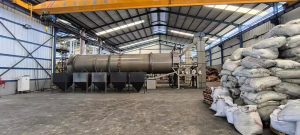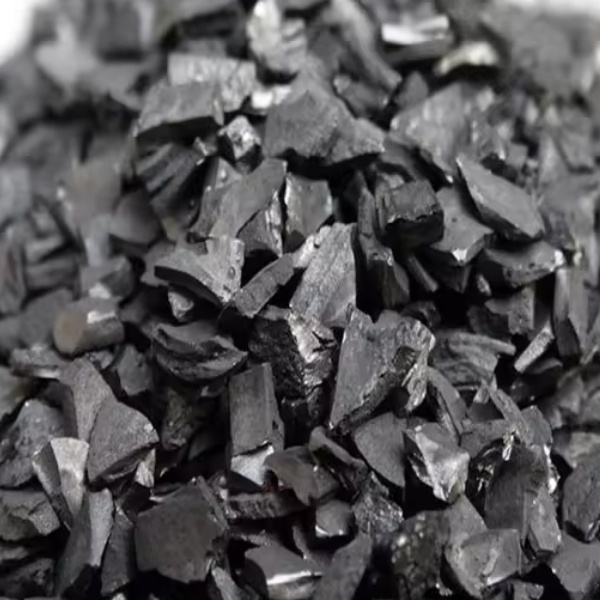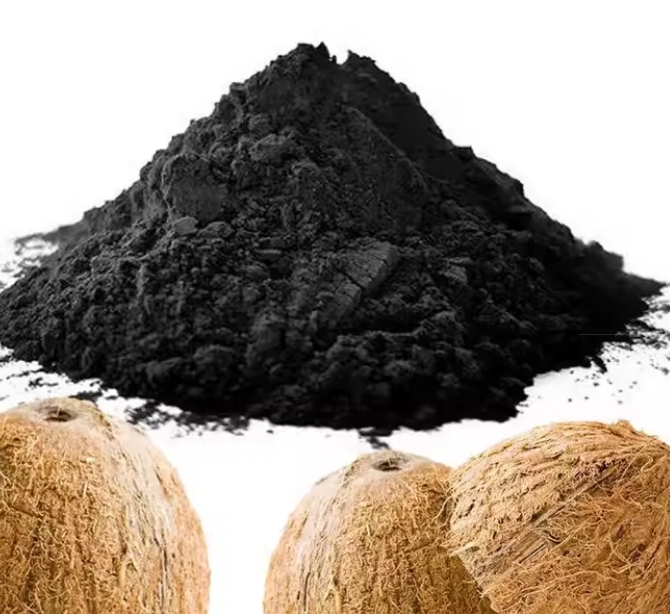Activated carbon is a material commonly used to absorb harmful gases, remove odors, and filter impurities, including in air purification, water treatment, and industrial emission control. However, activated carbon will reach a saturated state and lose its adsorption capacity after being used for a period of time. Therefore, timely judgment of the adsorption saturation of activated carbon is very important for the use of coconut shell activated carbon.

- The basic principle of activated carbon saturation.
The working principle of activated carbon is to adsorb gas molecules or impurities in liquid through its surface pore structure. As the use time increases, the pores of activated carbon are gradually filled with adsorbed substances. When the adsorption capacity reaches the limit, the activated carbon reaches a saturated state. At this time, the activated carbon will no longer be able to effectively adsorb new pollutants and needs to be replaced or regenerated.
- Commonly used methods for measuring activated carbon adsorption:
2.1Gas adsorption activated carbon
For activated carbon used for air purification or exhaust gas treatment, the following methods can be used to determine its saturation state:
Gas detection method: Use a gas detection instrument to detect the gas outlet of the activated carbon adsorption device. If the detected concentration of pollutants is close to or exceeds the allowable emission standards, the activated carbon may be saturated.
Differential pressure method: Install a differential pressure meter at the inlet and outlet of the activated carbon adsorption device to monitor the pressure difference between the inlet and outlet. When the activated carbon is saturated, the gas flow is blocked, causing the pressure difference to increase. When it exceeds the preset limit, the activated carbon needs to be replaced.
Visual Inspection: For some simple systems, saturation status can be determined by periodic visual inspection of activated carbon for color changes. Saturated activated carbon usually becomes darker in color.
2.2 Liquid adsorption activated carbon:
For activated carbon used in water treatment or liquid filtration, the saturation status judgment methods include:
Water quality testing method: Regularly detect filtered water quality indicators, such as turbidity, color, odor and concentration of specific pollutants. When these indicators deteriorate to close to or exceed the standard values, it means that the activated carbon has been saturated.
Adsorption performance test: Take samples to test the adsorption capacity of activated carbon, and analyze its adsorption efficiency for specific pollutants through the laboratory. If efficiency drops significantly, the activated carbon needs to be replaced or regenerated.

- Treatment methods for different types of activated carbon after saturation.
Activated carbon comes in many forms, such as powder, granular and honeycomb. Different forms of activated carbon have different treatment methods after saturation.

Powdered Activated Carbon Powdered
activated carbon is commonly used in liquid filtration and water treatment. Due to its fine particle structure, regeneration is complicated and is generally replaced directly after saturation and disposed of as solid waste.
Granular activated carbon
Granular activated carbon is widely used in air purification and industrial waste gas treatment. After saturation, granular activated carbon can usually be regenerated. Regeneration methods include:
The regenerated granular activated carbon can be reused, significantly reducing the company’s operating costs and waste disposal pressure.
Thermal regeneration: heating activated carbon at high temperature to decompose or volatilize the adsorbed organic matter and restore its adsorption capacity.
Chemical regeneration: Cleaning activated carbon with chemical reagents (such as acids or alkalis) to remove adsorbed contaminants.
Biological regeneration: Use microorganisms to degrade organic matter on the surface of activated carbon and restore its adsorption capacity.
- Best Practices After Activated Carbon Saturation
Regular monitoring:No matter what type of activated carbon it is, regular monitoring of its adsorption efficiency and working status is the key to ensuring its effective operation. Through data analysis and trend prediction, the saturation state of activated carbon can be predicted in advance and replacement and regeneration plans can be formulated.
Optimize usage conditions:Controlling parameters such as the concentration, flow rate and temperature of pollutants entering the activated carbon adsorption device can extend the service life of activated carbon and reduce the saturation frequency. For example, in the waste gas treatment process, using a multi-stage pretreatment process to reduce the load of pollutants entering activated carbon can significantly improve the efficiency of activated carbon.
Regeneration and replacement combined:For renewable granular activated carbon, companies can establish a management model that combines regeneration and replacement to maximize the use of resources.
- Different activated carbon saturation treatment methods
Determining whether the activated carbon is saturated is a key link to ensure its effective operation. Through methods such as gas detection, pressure difference monitoring, water quality detection and adsorption performance testing, the saturated state of activated carbon can be accurately judged. Different types of activated carbon have different treatment methods after saturation. Powdered activated carbon is generally replaced directly, while granular activated carbon can be reused.
Through regular monitoring, optimizing usage conditions and a management model that combines regeneration and replacement, companies can effectively manage the use of activated carbon to ensure its adsorption efficiency and economy.



